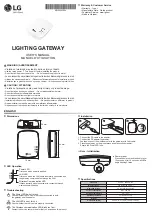
SS-16 VoIP-2-GSM USER MANUAL
DOC. NO: SS-16-14 (REV. 02)
Page 50 of 84
Typical voice conversations can contain up to 35 to 50 percent silence. On VoIP networks,
both conversation and silence is packetized. If VAD is enabled, the equipment sends out
RTP packets only when voice is detected, thus decreasing bandwidth by 30-50 %. This way
the SS-16 VOIP-2-GSM will send voice packets only when it has voice input. When it
detects silence on RTP, it will send a “silence packet” to the other side which uses less
bandwidth and allows to be interpreted for generating comfort noise.
6.6.2
DTMF Settings
Settings for sending out DTMF in VoIP calls:
This configuration area establishes the means of sending out DTMF into the VoIP
calls. There are three methods available, which may be used at the same time.
Transmission of DTMF signalling can be done in band, out of band in RTP packets, or
sending out INFO messages (as digital telephone-events).In the case of H323
protocol, the H.245 signalling would be used.
Under the SIP protocol, the INFO method would be used for carrying of mid-call
signalling information along the session signalling path (for example to send the
DTMF digits generated during a SIP session). Check the box “SIP Info” for this way of
transmitting DTMF.
When checking this “RFC 2833” options, also complete the next Parameters fields to
the right
-
payload type for DTMF in RTP (according to RFC 2833)
-
redundancy payload type
-
redundancy scheme: either IETF or =AAL2.
















































